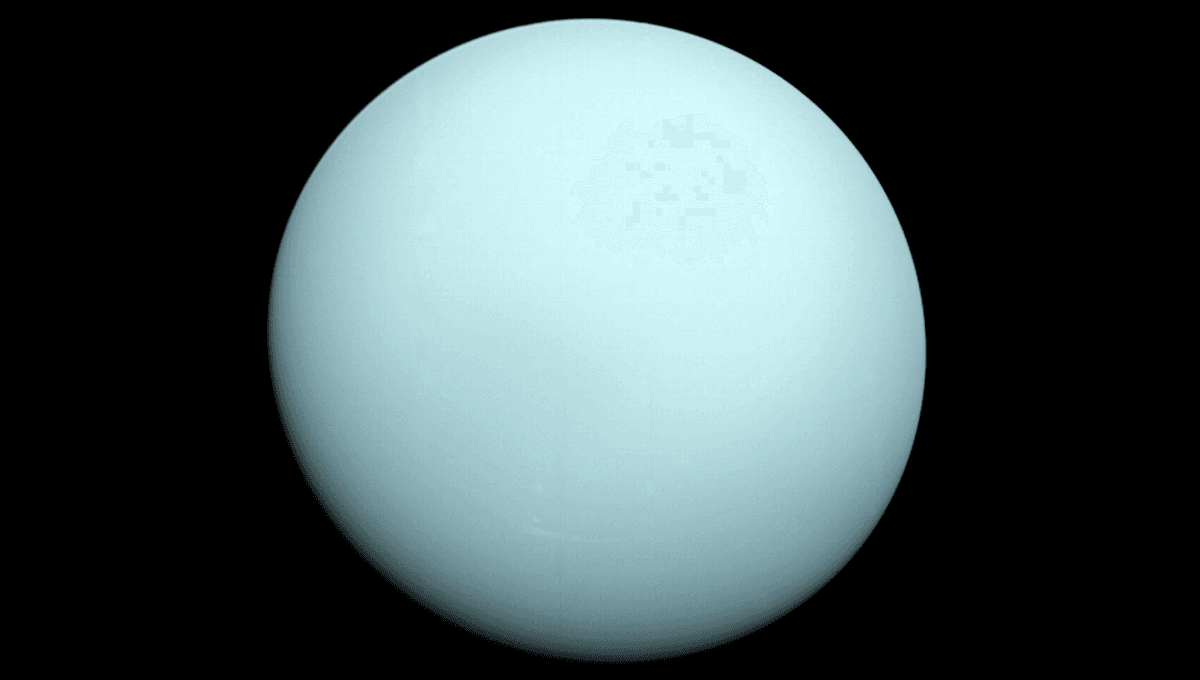Uranus Is 12.5 Percent Hotter Than We Thought, And Scientists Want A Closer Look

Uranus Is Hotter Than We Thought, And Scientists Want A Closer Look
A new study on Uranus has found it is hotter than we thought, prompting scientists to suggest we should return to the ice giant.
The rest of this article is behind a paywall. Please sign in or subscribe to access the full content. While Mars, Jupiter, and Saturn are regularly visited by human spacecraft, the outer planets Neptune and Uranus have only been seen up close once, as Voyager 2 flew past them on its way out of the Solar System. As it passed Uranus in 1986, it sent back puzzling data about a planet already thought to be the Solar System's weirdo, rotating almost sideways around 2.9 billion kilometers (1.8 billion miles) from the Sun. One of the most puzzling things Voyager indicated was that Uranus didn't appear to give off much in the way of heat. Planets have several sources of heat available to them, including heat from the decay of radioactive elements, heat from the Sun, tidal heating, and primordial heat generated by gravity during their formation processes. "The study of radiant energy budgets and internal heat is crucial in astronomy, planetary science, and atmospheric science, as it helps us understand planetary weather, climate dynamics, and the processes governing planetary formation and evolution," the team explains in their new paper. "Uranus, with its extreme axial tilt and enigmatic energy balance, presents a particularly compelling case." That enigma was that according to Voyager's measurements, it appeared that Uranus gave off no heat beyond reflected sunlight. This was different to gas giants Jupiter and Saturn, as well as fellow ice giant Neptune, which all have their own sources of internal heat, and painted Uranus as an even bigger outlier. But in the new international study led by University of Houston researchers, scientists found evidence that Voyager may have misled us about the planet. Using telescope observations from 1950 to 2022, representing almost an entire Uranus year (around 84 Earth years), as well as modeling, the team found that Uranus is emitting around 12.5 percent more heat than it absorbs from sunlight. "This means it's still slowly losing leftover heat from its early history, a key piece of the puzzle that helps us understand its origins and how it has changed over time," Xinyue Wang, first author on the paper, explained in a statement. "For Uranus, the fact that emitted thermal power exceeds absorbed solar power indicates a radiant energy deficit, implying that Uranus is losing energy," the team adds in their paper, "though the cause and consequences of this energy loss are not yet fully understood." While the team weren't expecting Uranus to give off this much heat, it is still far lower than the heat given off by the other giants of the Solar System, Jupiter, Saturn, and Neptune. These planets can emit as much heat as they receive from sunlight through internal sources. It's not clear why the difference with Uranus, though proposed suggestions are that it is to do with its formation history or a different interior structure. The team suggests that there could be significant changes to Uranus during the seasons, potentially accounting for why Voyager did not spot this excess heat. "The only flyby observations conducted by Voyager occurred near the summer solstice of the [southern hemisphere], providing only a very limited sunlit view of the [northern hemisphere]," the team explains. "Additionally, the spectral coverage of the Voyager instruments was limited. As a result, the Voyager observations had a restricted capability to examine Uranus' meridional energy distribution." Unfortunately, orbiting and ground-based telescopes are also limited in which hemisphere of Uranus we can view. To learn more about the planet, and how planets lose and generate heat in general, a mission to probe Uranus may be necessary. “From a scientific perspective, this study helps us better understand Uranus and other giant planets," Wang added. "For future space exploration, I think it strengthens the case for a mission to Uranus.” The study is published in Geophysical Research Letters.


